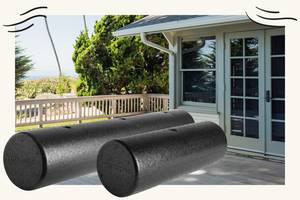Foam Rollers
Trusted By Our Loyal Customers
Free shipping over $35

50 day return policy

Finance starting from $19/month

From our gear experts
What are the benefits of foam rollers?
What are the disadvantages of foam rollers?
What to look for when buying a foam roller?
What is the best length foam roller to get?
What is the best diameter foam roller to get?
What are foam rollers made from?
What is the difference between PE, EVA, and EPP foam rollers?
EPP is the densest foam roller material and offers the best longevity and resistance to wear. EPP rollers are used by professionals and athletes who require deep tissue massage. Most foam rollers you’ll see in a commercial gym are made from EPP. That’s why EPP is the best material if you’re buying a roller for regular foam rolling at home.
What is the difference between foam roller colors?
Is a vibrating foam roller better than a regular one?
Should foam roller be smooth or bumpy?
How much do foam rollers cost?
How do you foam roll for beginners?
Where should you use a foam roller?
Where should you not use a foam roller?
Should foam rolling be painful?
Can you foam roll every day?
Can you overdo it with a foam roller?
What can I do instead of foam rolling?
Staying hydrated will help keep your muscles pliable and loose, and remember to breathe slowly and deeply during your foam rolling routines. Visualize driving your breath into your tight muscles as you inhale and “releasing” tension as you exhale. This will help more than you think!


